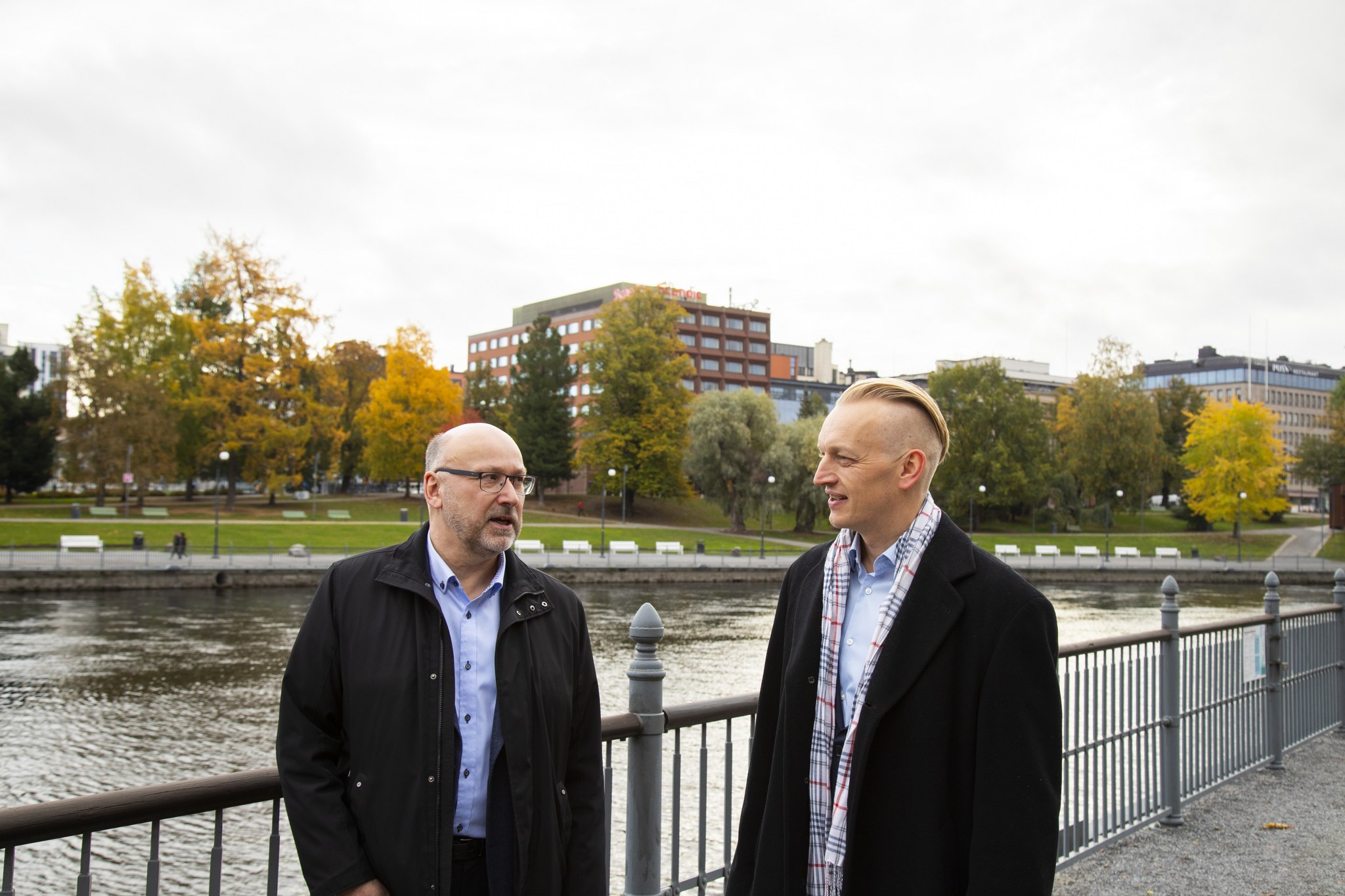Digital transformation is a significant opportunity for Tampere and its residents

In the Regenerative Tampere project, the city's organization aims to be structured in a way that fully capitalizes on technological advancements. The work is being done for the benefit of residents, communities, businesses, and the environment.
– We need to view renewal as a great opportunity. We shouldn't fear change, as many things are already much smoother thanks to digital services, says Juha Yli-Rajala, the Group CEO of the City of Tampere.
The Regenerative Tampere project has been operational for less than a year. By the time it concludes, the goal is to have established structures within the city's organization that promote and accelerate sustainable digital transformation.
– The project must ensure that the city's nearly 9,000 employees are engaged in the digital transformation; developing their own capabilities and understanding the opportunities that change brings, Yli-Rajala states.
Renewal needs to be led and supported
Yli-Rajala emphasizes that the city's top management plays a crucial role in driving digital transformation, which is why leadership training is currently underway. By the end of the year, a comprehensive overview of the digital transformation should be completed: the current state, future goals, and steps toward the future.
As staff renewal capabilities grow, the city will need a model to utilize the new skills for the benefit of the city and all its residents.
– This is where the change management model of the Regenerative Tampere project comes into play, allowing us to organize more effectively for digital transformation. We will allocate some of our people’s skills and renewal capabilities to support development efforts, explains Aleksi Kopponen, the Director of Digital Transformation in the city of Tampere and the project manager of Regenerative Tampere.
Examples of development efforts include improving citizen service channels, smart home solutions, promoting well-being, and supporting entrepreneurship. The Regenerative Tampere project has already gained valuable experience in education and learning development.

Example of renewal: Tredu considering the future
In the fall of 2023, the Tampere Vocational College, Tredu, carried out future-oriented work related to the development of the Hepolamminkatu campus. The goal was to model what a learning environment for technical vocational education would look like in 2040.
– The world is moving forward, and education must keep pace with changes in the working life. We need to consider how to utilize technology in new ways to support learning and learners, says Kirsi Viskari, the Director of Vocational Education at Tredu, outlining the project’s objectives.
The change transformation office of the Regenerative Tampere project was involved in Tredu’s future work, providing diverse support and posing challenging but very useful questions.
– Thanks to the change office, we understood that we need to look at things from multiple angles. Technology is not just a technical matter to be acquired. It involves skills and perspectives such as economic, legislative, and well-being considerations, Viskari explains.
Tredu's future work was conducted through workshop sessions that included teaching staff, students, and administration, emphasizing the need for diverse perspectives. In the workshops, both the desired future and the pathways to achieve it were described.
– At the end of the workshops, the best comment came from one teacher: these results must be remembered and utilized when developing learning environments, Viskari notes.
What Exactly is Digital Transformation?
In practical terms, it involves the ability to process information automatically – and increasingly autonomously with the help of artificial intelligence. Digital transformation integrates into our daily lives in various ways, often seamlessly.
– Digital transformation does not arise from ready-made technical devices or products that can simply be plugged into selected city services, Kopponen emphasizes.
He gives two common services that have already been transformed by digitalization as examples: public transportation and libraries. If someone wants to check the arrival time of a bus or tram at their local stop, they no longer need to search for a printed timetable or an online schedule. A user of the online library can manage their reservations anytime and anywhere, although a physical book still needs to be picked up from the library.
Shared understanding as the basis for renewal
The city's renewal is based on information and a shared interpretation of that information. For the change sought by the Regenerative Tampere initiative, it is not enough to provide information only to leaders and decision-makers.
– It’s about shared understanding, which requires that people have real opportunities to participate in its formation, Kopponen states.
Kopponen hopes that in the future, more ways will be found to ensure that the voices of all those who should be listened to in development efforts are heard. On the other hand, he emphasizes that renewing the city is not ultimately anything particularly extraordinary. There are people, businesses, and communities, as well as nature and the built environment.
– This entirety must be approached openly to understand what is truly needed where. Only then do we start building solutions, Kopponen concludes.
More Information about the Regenerative Tampere Project:
Aleksi Kopponen
Director of Digital Transformation
0401836384
aleksi.kopponen@tampere.fi
